Apple is enhancing its accessibility features in both iOS 8 and OS X Yosemite, widening its lead over Google's Android in accommodating the needs of users with disabilities.
Yesterday, Christina Farr of Reuters reported that the National Federation of the Blind was debating how it could most effectively get Apple to force millions of third party developers' apps to correctly and consistently use the company's accessibility frameworks to ensure that all apps are easy for disabled people to use.
Reuters gets Apple accessibility wrongers
Farr's report was as full of errors and omissions as the accessibility of the problematic third party apps (including Linked In) that she was writing about.
Despite noting that Apple is "the company at the center of the app world," Farr wrote that "Apple hasn't been a steady champion" in accessibility, citing the NFB as having filed a lawsuit in 2008 against Apple, demanding closed captions and other accessibility features in iTunes.
The NFB didn't actually file a lawsuit however, a fact Farr later corrected in her article. Instead, the group sent Apple a demand letter seeking broader support for captions in iTunes content. There were two reasons why the group targeted Apple: first, its clout in media related to iTunes, but secondly was Apple's long history in pioneering advanced accessibility features.
Apple was one of the first consumer tech companies to recognize usability by people with disabilities as a necessary feature, dating back into the ancient history of the Apple II and original Macintosh. Apple set the standards in accessibility that other companies later followed.
Over ten years ago in 2004, Apple introduced a Spoken Interface Preview for OS X Panther, building upon on accessibility APIs introduced to developers at the previous years' WWDC.
The feature set was released as VoiceOver for OS X Tiger the next year, incorporating the first mainstream screen reader built into a desktop computing platform, supplying advanced software that previously users cost hundreds of dollars to install and maintain.
In March 2009, Apple introduced the third generation iPod Shuffle with a similar VoiceOver feature serving as an audible user interface for all users, not just those with visual impairments. Later that year, Apple also added VoiceOver to iOS 3 at the release of iPhone 3GS, making the new power of the smartphone accessible to blind users.
Today, as was the case for iTunes in 2008, the NFB is targeting Apple's App Store because first, that's where the desirable content is, and second, Apple continues to be the company pioneering advanced accessibility.
Reuters erases the context of Tim Cook's thoughts on accessibility
As if channeling Greenpeace on the environment or the New York Times iEconomy on working conditions in China, Reuters turned the story upside-down to portray Apple as indifferent to the needs of disabled users."We design our products to surprise and delight everyone who uses them, and we never, ever analyze the return on investment. We do it because it is just and right, and that is what respect for human dignity requires, and its a part of Apple I'm especially proud of" - Tim Cook
Farr cited a speech made by Apple's chief executive Tim Cook at Auburn University last year, where he "described people with disabilities 'in a struggle to have their human dignity acknowledged.'"
Her direct quote of Cook added, "they're frequently left in the shadows of technological advancements that are a source of empowerment and attainment for others [...]" Bizarrely, however, she cut the quote mid-sentence, leaving out Cook's actual message on the subject.
Cook actually continued, "... but Apple's engineers push back against this unacceptable reality, they go to extraordinary lengths to make our products accessible to people with various disabilities from blindness and deafness to various muscular disorders.
"I receive hundreds of e-mails from customers every day, and I read them all. Last week I received one from a single mom with a three year old autistic son who was completely non-verbal, and after receiving an iPad, for the first time in his life, he had found his voice. I receive scores of these incredible stories from around the world and I never tire of reading them.
"We design our products to surprise and delight everyone who uses them, and we never, ever analyze the return on investment. We do it because it is just and right, and that is what respect for human dignity requires, and its a part of Apple I'm especially proud of."
Farr's report for Reuters simply stated that "the company declined to comment on its accessibility strategy or whether developers should be required to make apps accessible."
Apple has a quite evident "accessibility strategy"
Rather than having nothing to say on the subject, Apple has devoted an entire section of its public website to accessibility, headlined with "we've done everything possible to make anything possible."
The site notes, under the subheading "Accessible to the core," "Our accessibility features work the same way across Apple products and apps. And since they come standard in iOS and OS X, these technologies transform Apple devices into affordable assistive devices."
Beyond making its devices work for people with vision and hearing impairments with technologies such as VoiceOver and FaceTime, Apple also addresses physical and motor skills with Assistive Touch, and learning and literacy with iOS Guided Access, which "helps those with attention deficits or other cognitive disabilities stay focused on a single app."
In addition to making its own devices and apps broadly accessible, Apple documents for developers how to make their own apps work with the company's platform accessibility technologies, and addresses the subject in its WWDC sessions.
New in iOS 8 & OS X Yosemite
On top of existing iOS accessibility features, iOS 8 will add the advanced Alex voice from the Mac to iOS VoiceOver, Speak Selection and the new Speak Screen feature, which reads what's displayed on the screen when invoked by a gesture or by asking Siri.
Guided Access, which was originally introduced in iOS 6 to help parents and teachers to focus a child on a single app to provide an uninterrupted learning experience, is embellished in iOS 8 with Time Limits (above), which guides a child through transitions to prepare them to move on to the next activity in a scheduled series. To leave Guided Access mode, a parent can authenticate with Touch ID.
iOS 8 also adds an improved Zoom feature (below) that lets a user can change which part of the screen is magnified via dragging the edge of the window, with options to adjust zoom level. A new systemwide Braille keyboard in iOS 8 supports Braille chords in 6 dot Braille, which are then translated into text.
Finally, iOS 8 adds multi-device support for Made for iPhone hearing aids, allowing users to pair with multiple iOS devices so they can switch between them as needed.
For OS X, Apple is building upon its existing platform accessibility features by introducing a new Accessibility API for developers that makes it easier to create accessible apps by doing most of the heavy lifting for them. AppKit now infers attributes and fills in attributes automatically, and facilitates VoiceOver support for custom controls.
The new API is both binary and source compatible with Apple's previous tools, enabling applications that already target accessibility to continue to work. Apple is also supplying a new Accessibility Inspector for developers to review the accessibility definitions in their user interface elements.
Android "years behind" iOS in accessibility
Comparing the accessibility in iOS to Android in 2010, blogger Jamie Teh wrote, "I find it extremely frustrating that Android accessibility is in such a poor state. It seems that Google learnt nothing from the accessibility lessons of the past. This mess could have been avoided if the accessibility framework had been carefully designed, rather than the half-done job we have now. Good, thorough design is one of the reasons that iPhone accessibility is so brilliant and 'just works'."
Three years later, blind accessibility blogger Marco addressed what had changed in Android. Android 4.0 finally introduced TalkBack a screen reader to Android in 2011, "more than two years after Apple came out with VoiceOver, and with a model that still left a lot to be desired," he wrote.
Android's accessibility isn't consistent across the platform. Marco noted that on an "HTC One, for example, a TalkBack user cannot even use the dial pad to enter a phone number." But even on a Google Nexus 4 running Google apps, Marco observed "some of the stock apps like Calendar don't work that well with TalkBack, or at least not if one is used to the excellent support of Calendar in iOS."
Where accessibility meets international support, Marco found that Google's stock keyboard supports accessibility, but not international characters, while alternative third party keyboards on Android that do support other languages frequently offer no accessibility."The [Apple] Maps application in iOS 6 is a magnificent piece of software in accessibility terms. I've never had such accessible maps at my finger tips. The [Google] Maps app on Android only offers limited navigation capabilities. Maps themselves aren't accessible at all."
"Text editing is another problem that lags behind terribly in Android if you do not use an external keyboard," he added. "On iOS, one can control the cursor, do text selection, do editing functions such as cut, copy and paste. On Android, there are gestures to move by character, word, or paragraph, but there is no way to select text or bring up the editing functions of a text field in a controlled fashion."
In mapping, Marco notes, "The [Apple] Maps application in iOS 6 is a magnificent piece of software in accessibility terms. I've never had such accessible maps at my finger tips," while "the Maps app on Android only offers limited navigation capabilities. [Google] Maps themselves aren't accessible at all."
He details further night and day differences between iOS and Android in ebooks, in Braille support, in navigating scrolling lists and date pickers, in using the camera and photos, and in other applications, concluding that switching from an iPhone to a Nexus 4 "would be like stepping back a few years in accessibility," and noting "the experiment, tailored towards my usage patterns at this point in time, has failed."
A similar experiment detailed by accessibility blogger Chris Hofstader earlier this year involved a Nexus 7 tablet.
"Google insults the community of people with print impairments by claiming that this device is accessible," he stated. "The accessibility is, at best, a functional prototype of something better to come in the future but Google seems to believe that this is an adequate solution."
He concluded, "In comparison to an iOS 7 device, with zero out-of-the-box accessibility failures and only a few accessibility bugs, a Nexus 7 comes shipped with zero built-in apps that do not contain between one and many accessibility failures. The accessibility issues on Android, therefore, are not just bugs but a systemic problem at Google."
Reuters only mention of Android came in a paragraph noting, "advocates of the disabled want the problem solved by the company at the center of the app world — Apple. Rival Google Inc, whose Android operating system drives more phones than Apple, is also under pressure, but as the creator of the modern smartphone and a long-time champion for the blind, Apple is feeling the most heat."
 Daniel Eran Dilger
Daniel Eran Dilger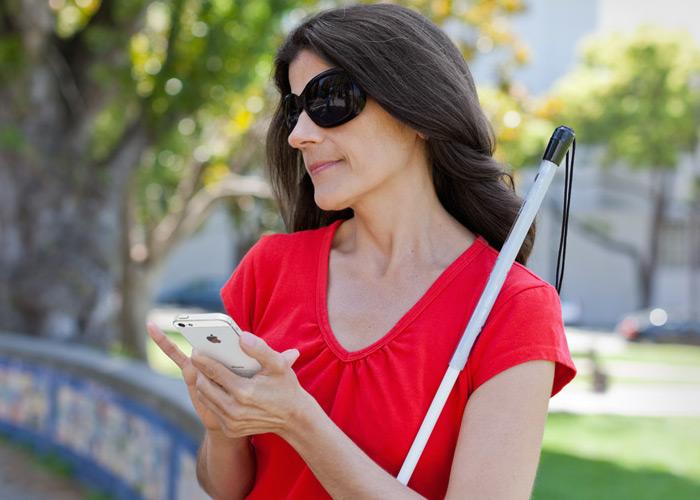
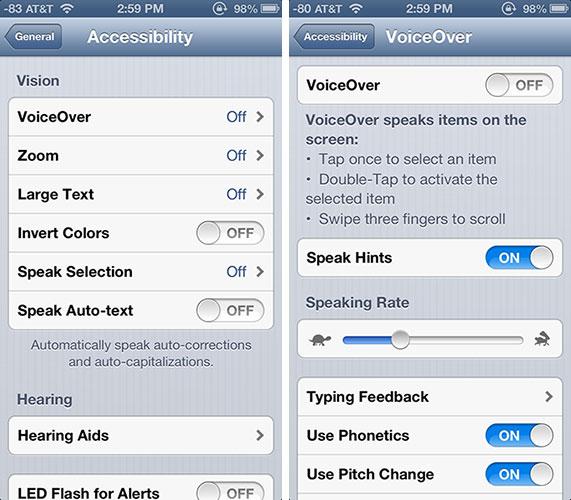
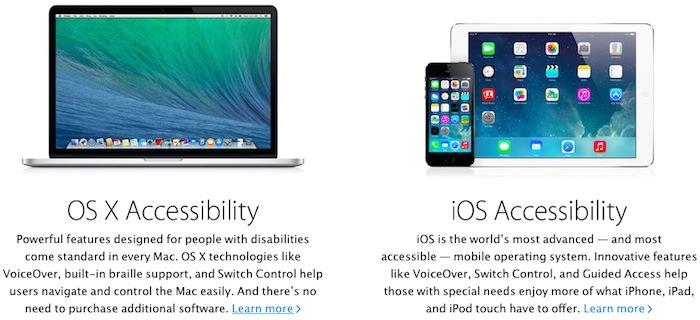



-m.jpg)





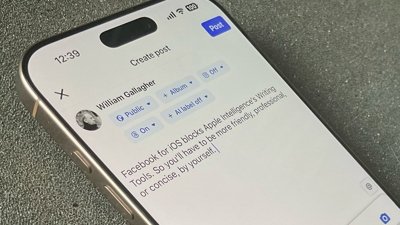
 William Gallagher
William Gallagher

 Andrew O'Hara
Andrew O'Hara
 Wesley Hilliard
Wesley Hilliard

 Malcolm Owen
Malcolm Owen
 Marko Zivkovic
Marko Zivkovic
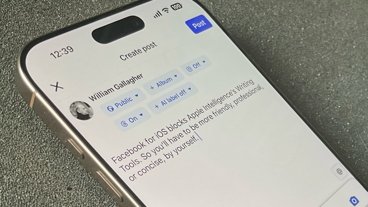




-m.jpg)




17 Comments
"There is no honour in journalism." Seems Reuters is one among many 'news' creators committed to proving the truth of this. A.
Would we create health concerns if we held our breath until Reuters publishes a correction?
Holy flying carp Batman. That reporter got handed her ass!
I love the accessibility features of both my macs and my idevices. I think the confrontational approach taken by NFB is misguided, to say the least. But I guess that's the mindset of some advocates -- every interaction has to be a battle.
The elephant in the room is WHY did Rueters allow this piece.